Today, sophisticated hair coloring techniques have become very popular. This is far from a new trend, but the demand for it is only growing every year. The most popular are such techniques as ombre and balayazh, and besides this, a rooftop or bronzing, and it is to them that modern ladies give the greatest preference. This kind of technique offers the preservation of the natural tone of the hair and helps to become more stylish and fresh.



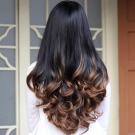
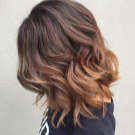
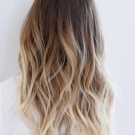
What it is?
Most often, women change the color of their hair in order to significantly modify their own image, to become more vibrant and individual. But if you choose methods of complex coloring, you do not need to expect any significant changes in appearance, unless you stop your choice on contrasting or even iridescent tones, such as purple or blue.
The purpose of this kind of technique is to emphasize the natural beauty of hair, to give the woman’s appearance an originality. Often they are used to look younger, to highlight the eyes on the face and correct the flaws of its shape.

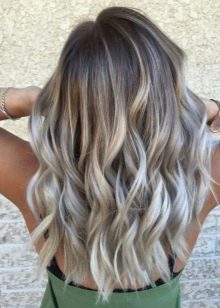
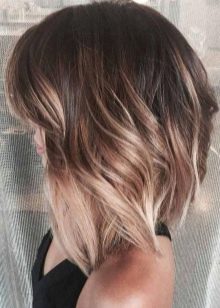
The main advantages of complex hair coloring:
- Suitable for the fair sex in any age group;
- noticeable facial rejuvenation;
- do not require frequent correction, since the roots here will not be affected;
- visually make hair voluminous;
- will allow you to change the look;
- alternating shades helps to beat the natural color of the strands, make them more interesting;
- allows you to "remove" gray hair and yellow pigment from the hair;
- curls become radiant and even iridescent;
- All techniques, when properly executed, look natural.
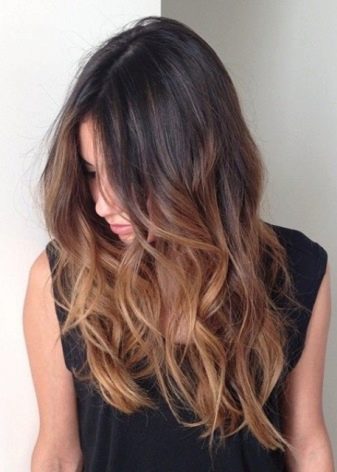

Cons of complex coloring:
- certain restrictions on the color and length of the hair;
- damage to the structure of the strands;
- services are expensive;
- it is extremely difficult to paint a house with your own hands;
- not all masters have the technique of complex coloring;
- without a full styling, the hairstyle will not look very neat.
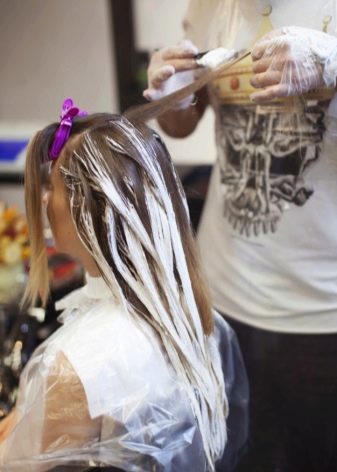
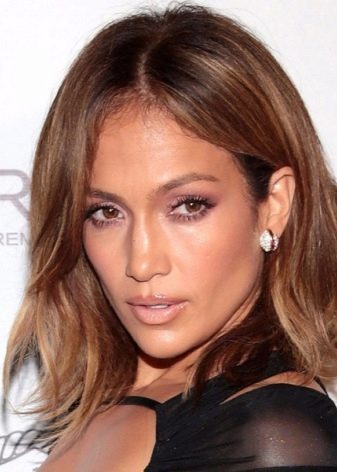
Other features
Particular contraindications to the implementation of such techniques are when a woman is breastfeeding a child or waiting for his birth, as well as if she takes hormones.
Do not stain curls if they are badly damaged, weak or seriously spill out. Cascading haircuts will make any complex color more expressive.
When choosing a tone for highlighting locks or hair ends, you should focus on your color type. It is better for women with a warm color type to opt for golden or wheat tones, ladies with a cold color type should choose platinum, as well as ash or pearl tones.
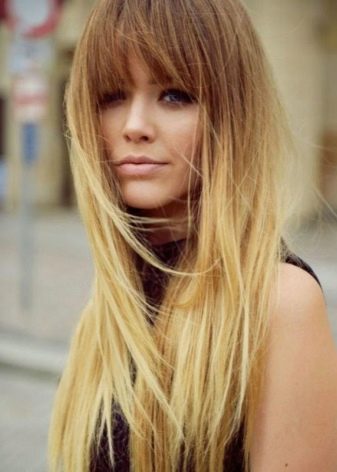

Ombre
The word "ombre" takes its origin from the word "shadow", if translated from French. Ombre is a special style, here the shade “stretches” from darkened tones to brightened ones. Ombre is suitable for natural brunettes, and women with light curls usually choose “sombra” - this is also a complex color, but only here it is performed from a light tint to a darker one. "Sombre" looks easy and unobtrusive, since only 2-3 shades change.
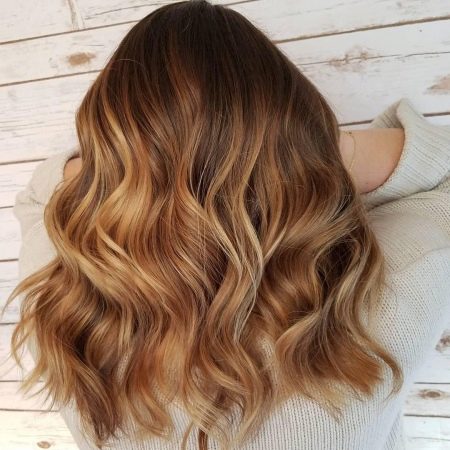
The ombre uses the most unusual colors, from red to purple or pink. When implementing ombre, the natural color will be overlapped with a new tone. For example, real brunettes at the ends of the hair will not have a dark shade.
Not being able to do the ombre technique and ultimately get a look of untidy hair is very easy, for this reason professionals recommend painting only in a trusted salon.

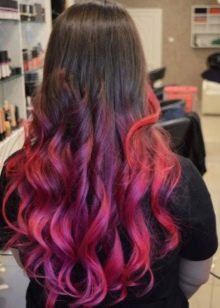
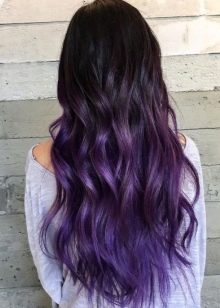
Pros:
- after coloring, the effect of the hair will appear, as if they had faded in the sun;
- if the haircut quickly gets bored, you can just cut the ends to return the natural color of the hair;
- ombre allows you to get the effect of volume;
- Ombre updates are infrequent: every 3 months.


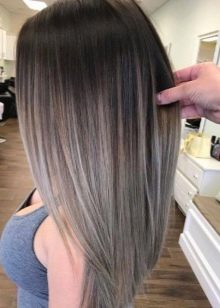
Minuses:
- coloring should not be done on curls if they are seriously damaged or if the ends are split;
- too contrasting heyday of the ends and the initial color of the hair will look ineffective, so you should choose a difference of only a couple of shades;
- work with strands is best entrusted to a professional, and this is quite an expensive pleasure.
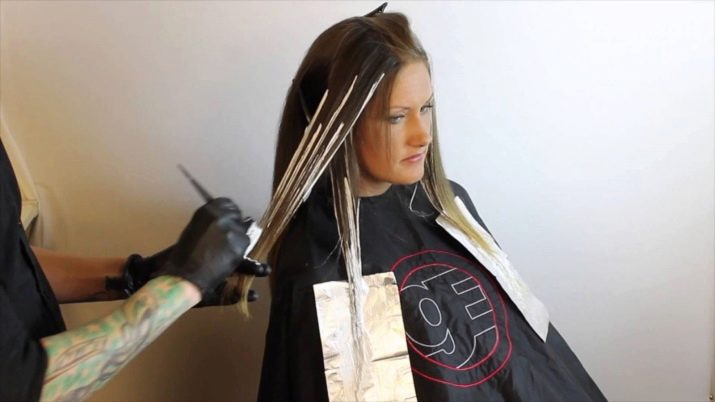
Stylists always try to come up with something new and extremely original, because of this complex type of color, new varieties quickly appeared.
- Classical technique. The roots remain a natural color, and the ends of the hair are lightened. The difference in coloring will be only 1-2 units, and the transition band should be made softened.


- Ombre with a strip. Hair should be divided into 3 zones, 2 of them are painted in one tone, and the strip between these 2 zones should be contrasted.
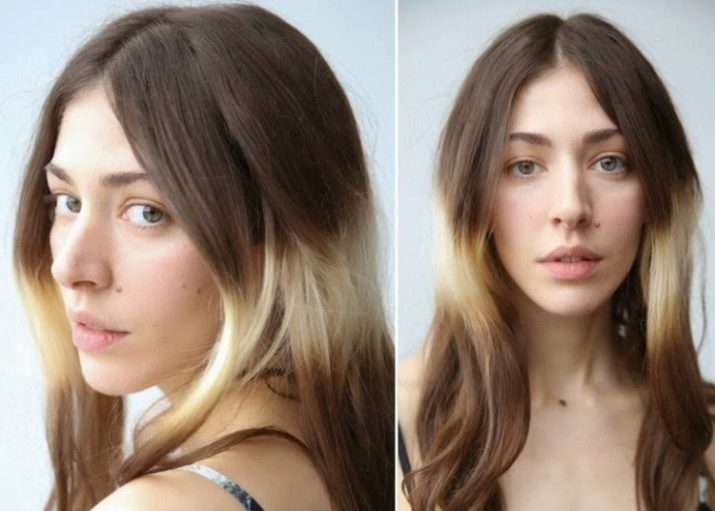
- Bronding. On the strands you need to apply a certain amount of dye colors that are fairly close to the natural color. The root zone remains intact or becomes much darker. Thus, a smooth transition of colors will be achieved - it is often called a soft “degrade”.

- Reverse technique. If the original color of the curls is too dark, then they need to be lightened, and the ends will remain untouched. If the intrinsic color of the curls is light, the roots are specially made darker, and the ends should become noticeably lighter.
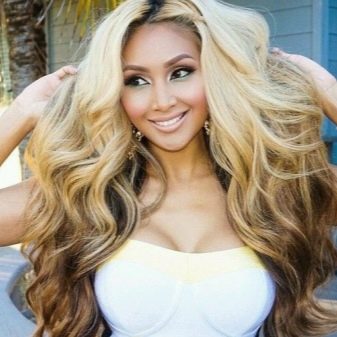
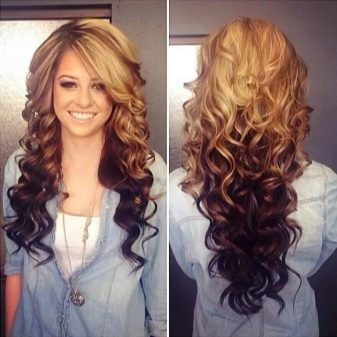
- Monochrome. Two contrasting shades are selected - light and dark. The border of the transition should immediately be visible to others.
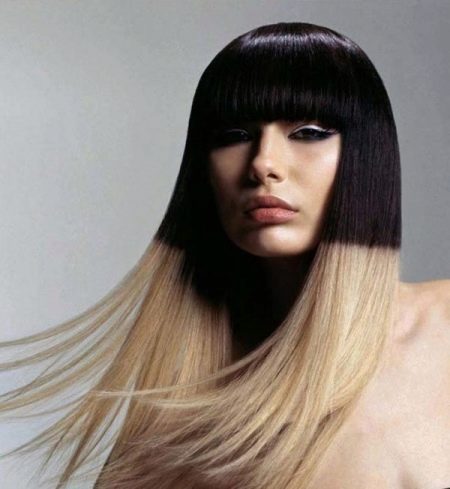
- Bright ombre. Any original colors are chosen: blue and green, lilac and pomegranate, as well as orange.
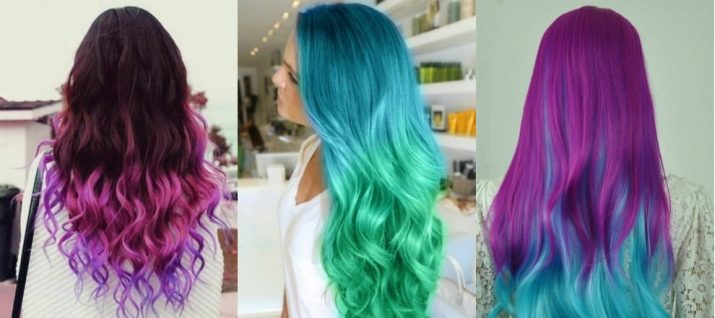
- Partial Only certain strands will be painted here to highlight the layering of the female hairstyle.
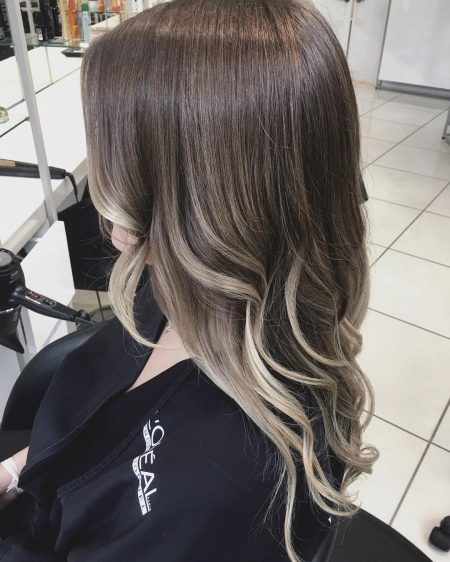
- With highlights. Suitable for fair-haired and natural blondes.On the locks, paint should be applied 2-3 tones lighter than the original color. Such an ombre will give the haircut a light glow - for this it is often called "highlighting."
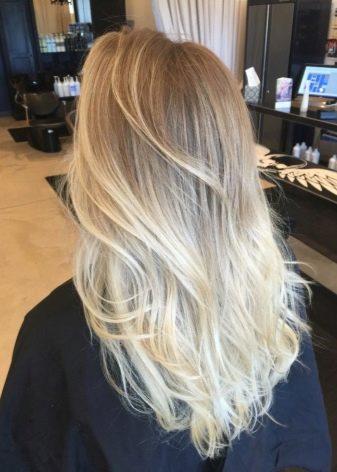

- Tongues of flame. More common on brunettes. Range of colors - from reddish to catchy bright red. The choice of locks for coloring is completely random.


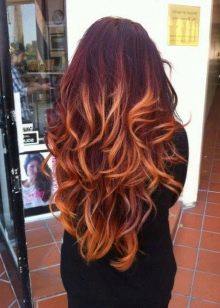
The best length of strands for the ombre technique is to the very shoulders and slightly lower. If the haircut is very short, it will be quite difficult to make an imperceptible transition from one color to another.
The most suitable haircuts for this technique are straightened and layered: regular and long caret, cascading haircut or ladder haircut. By texture, the strands can be completely straight or curly.
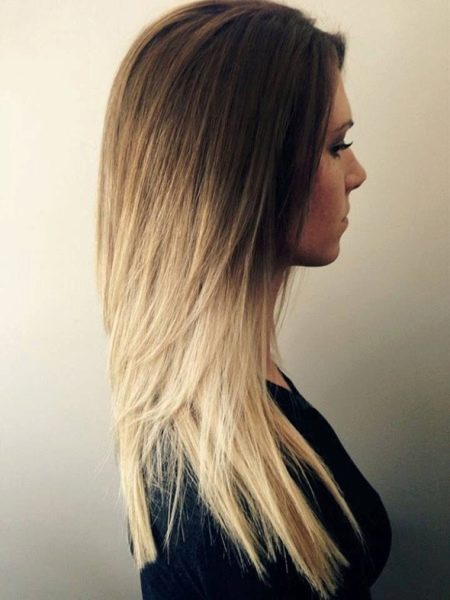
Technique of execution.
- The selected dye is applied to a specific area, and for a while the colored strands are covered with foil.
- After a predetermined time, the dye must be washed off.
- Apply the paint again to the previously treated part of the hair, shifting the top of the line by 2-3 cm. Again, cover the hair with foil, and after a while wash off the paint with warm water.
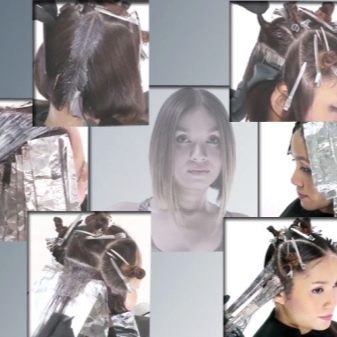

It is worth knowing that other popular coloring technologies appeared on the basis of ombre - sombre (soft, delicate tones that are closest to the natural color are selected), colombra (bright tones are selected in popular combinations), chambray (at least 2 tones are selected using which produces a multi-colored gradient).
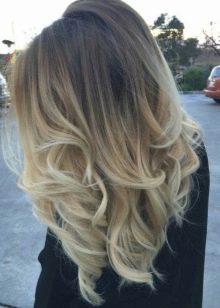
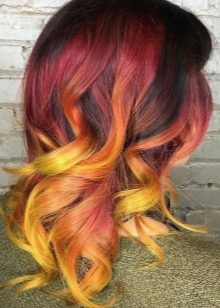
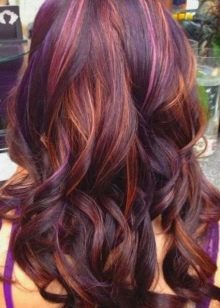
Balayazh
The main difference between the hammock and the ombre technique is the process itself. The word "hut" also came from France and translates as "revenge" or "sweep". Balayazh is the same “stretch” of color, but when it is done, the curls are not covered with the entire dye, but gently brush horizontally along the strands. This will be the same “sweeping”.
When painting part of the strands is protected with foil, because the dye will fall only on small areas. Ombre differs from balayazh in that the dye should be applied vertically.
Balayazh, by the way, is considered a more complex type of modern painting technique. In the tinting procedure, the darkened ends of the strand are left unpainted here. Balayazh is more natural when compared with ombre.
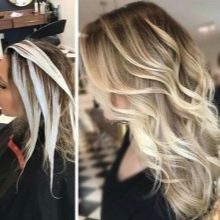


Toning in the technique of balayazh can consist of many layers, and the most popular version of balayazh is the classic bright highlights on dark curls. Balayazh should be located in the lower third of the haircut, and therefore is much more reminiscent of an ombre than "burnt" locks along the entire length of the hair.

Pros:
- coloring is perfect for those who dream of an insignificant change in their own image;
- for owners of curly curls, such a painting is best suited, as the waves will smooth out sharp changes in tones;
- if the curls are straight - you can get a spectacular and bold image;
- high-quality staining will help to correct the irregular shape of the oval of the face;
- balayazh allows you to look younger by 4-5 years;
- when painting, the locks do not wrap in foil, and the condition of the curls does not deteriorate.
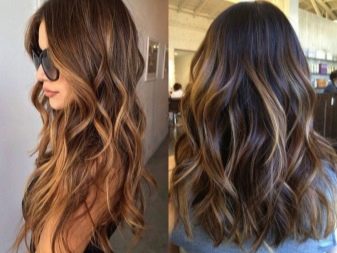
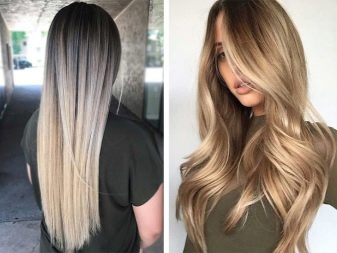
Cons relate mainly to performance techniques and hair care.
- Unaesthetic effect if the master selects shades incorrectly. The selected shade may not match the original hair color. In addition, the transition may be too sharp and noticeable, which will look ugly.
- Balayazh will require daily care for curls. Hair should be clean, with a good styling. Ideally, hair is best curled beautifully.
- Only experienced craftsmen should work with complex equipment. Otherwise, the haircut will look bad, and the condition of the hair will deteriorate.

The dye is applied in 2 ways - in the form of the letters "W" or "V" - it depends on the effect that you want to get. Both methods allow you to achieve soft accent color transitions.
The thickness and structure of female hair can be different. The best choice would be haircuts that go below the shoulder line.
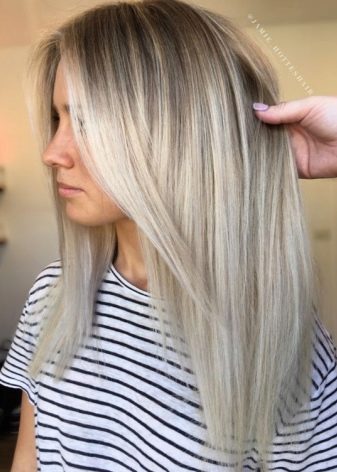

Balayazh technique.
- It is necessary to select a not very wide strand of hair, and stab the remaining mass of hair and remove so as not to interfere with the painting process.
- With light brush strokes, the dye is applied to the strands with a V- or W-shaped method.
- A stained strand is sometimes wrapped with a film (foil), but you can do without it.
- Next, all hair is dyed.
- The dye is washed off after a certain time.

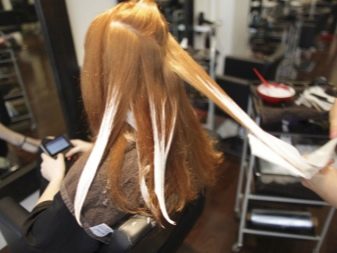
What are the similarities?
Both painting techniques are also called one of the types of modern highlighting. The meaning of both species is approximately the same - to isolate part of the curls and color them in a slightly lighter or slightly darker tone from the original color. The result will be a highlight on a shade warmer or colder. But in the usual sense, both types of painting guarantee the effect of fading under the sun or a little darkened locks. Ombre and balayazh are considered rather soft types of highlighting, since the roots of the strands will not be painted.
Ombre and balayazh will help to stylishly refresh the haircut for those ladies who are not yet completely ready or simply do not want to dramatically change their style. In other words, both techniques are suitable if you want to experiment, but without a full color or haircut.
Ombre and balayazh will help to add creative accents to certain haircuts, when using tinting you can get the effect of renewal and a more stylish look.
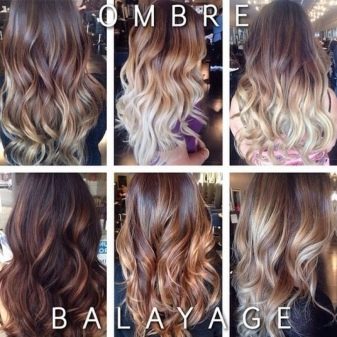
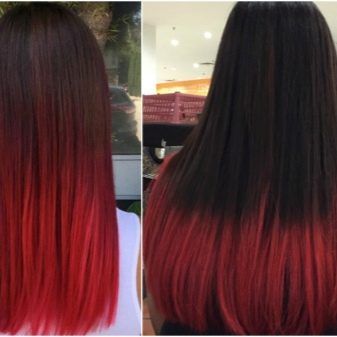
The main differences
The differences between the 2 techniques described above lies in the ways in which the dye will be applied. Balayazh is a “stretching” of the selected color along the entire length of the strand, while the ombre mainly focuses on the ends of these strands. That is what they seriously differ from each other.
The technique of "throwing" looks natural. Painting ombre and balayazh also differs damage to the ends of the hair. This should not be forgotten for those for whom the cut hair is a very acute problem.
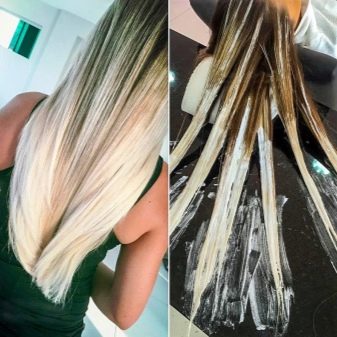
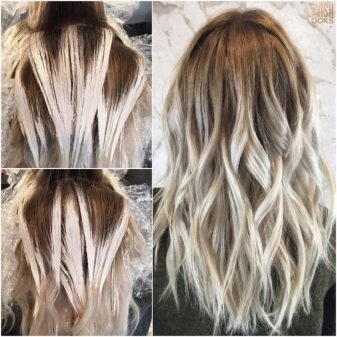
Which is better to choose?
Balayazh is better for those who do not dream of a serious change in their image, but want to make a certain update and an intriguing emphasis in it. This method will give you the opportunity to change the color of a large part of the curls on the head and significantly change the appearance of any woman. It is better to apply it to fair-haired and blondes - on too dark hair it rarely looks spectacular.

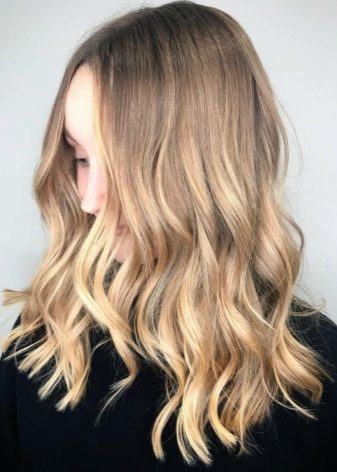
Ombre is the best option for those brave ladies who have long dreamed of getting a more vivid image and do not want to maintain 100% naturalness. This technique perfectly looks on the hair of any color and with a haircut of any length.
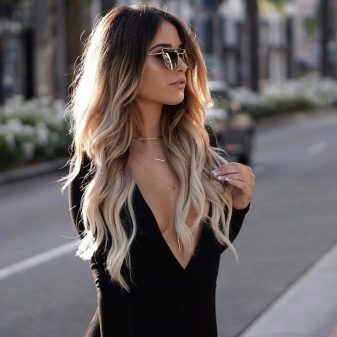
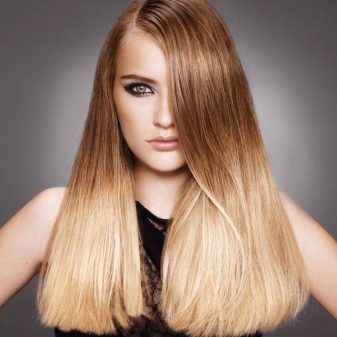
When dyeing hair using ombre technology, one should not forget that there is a high probability of deterioration of the ends of the hair, because they are very lightened. If you do not have this problem with hair, then you can seriously think about choosing this technique. In the balalaika, this problem generally disappears.
See the next video for the differences between staining techniques.










